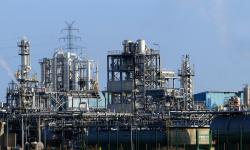Stirring things up with bearings from SMB
30 Jan,2019
In the Harry Potter series, we see many scenes in Professor Snape’s potions class where a simple potion can turn into a deadly poison with nothing more than a wayward stir. In the real world, correctly mixing chemicals is even more important. Here, Chris Johnson, managing director of SMB Bearings, explains the problems with ineffective chemical stirring in pharmaceutical production and how bearings can help.

To all extents and purposes, the chemical industry is a numbers game. Chemical reaction rates are never clear-cut. In fact, there is always an amount of material that doesn’t react because it is physically impossible to achieve a 100% conversion rate. This often leads to large amounts of wasted product, which is why so many chemical processors are turning to technology to improve their conversion rates.
In the past, processing plants have used large stirrers to mix together solutions and reactants. However, this method poses more problems than it solves, as it leaves large amounts of unstirred material. Not only does this require more work to incorporate mixture, it can damage more delicate chemical compounds.
The answer is for plant managers to use statistically-driven approaches, to accurately map out the flow of fluids and distribution of heat in vessels. By using these methods, producers could move away from large stirrers, to smaller ones placed in more crucial areas. This method could increase mixing rates and reduce the development of cold patches.
With the shift in types of stirrers being used, power delivery is no longer the priority. When designing stirrers for chemical and pharmaceutical processes, accuracy and delicate stirring actuation is fundamental. Not only must stirrers have these qualities, they must also be corrosion resistant, as many chemical reactions use volatile compounds that react at extreme temperatures.
Stirrers have three main components, the motor, the stirring rod and the transmission. To be able to achieve the productivity levels required by pharmaceutical production, all three of these parts must be up to the task. This is particularly pertinent for the engine and transmission, as jarred mixing can influence the movement of the mixture. Good bearing selection is fundamental for enabling smooth transmission, as it allows for precise movement of power from the engine to the mixer.
As such, to achieve smooth and accurate stirring, having high-quality bearings is a must. The corrosive nature of some reactions means inert materials like ceramic bearings or stainless-steel bearings are best suited for pharmaceutical and chemical production.
If the bearings are not inert and the mixture manages to get into them, they may react — ruining the product or causing damage to the vessel itself. By having inert bearings this cannot happen, allowing for reduced maintenance costs and peace of mind.
Smaller, more precise stirrers also help reduce waste and improve the overall quality of the final product by better distributing heat and reactant. As more emphasis is put on reducing waste in industrial production, it is crucial to make sure that processes allow for the largest amounts of product to be successfully created.
By using accurate stirrers, paired with effective statistical models, the reduction in waste can be accelerated. This will not only decrease expenditure on waste, maintenance and primary resources, it will create a more homogenous product and pave the way for higher purity levels.
Luckily, we live in a world where an extra stir does not completely ruin an entire batch of products. However, it is still best to reduce waste and improve quality by making sure our stirrers are of the highest possible quality.
